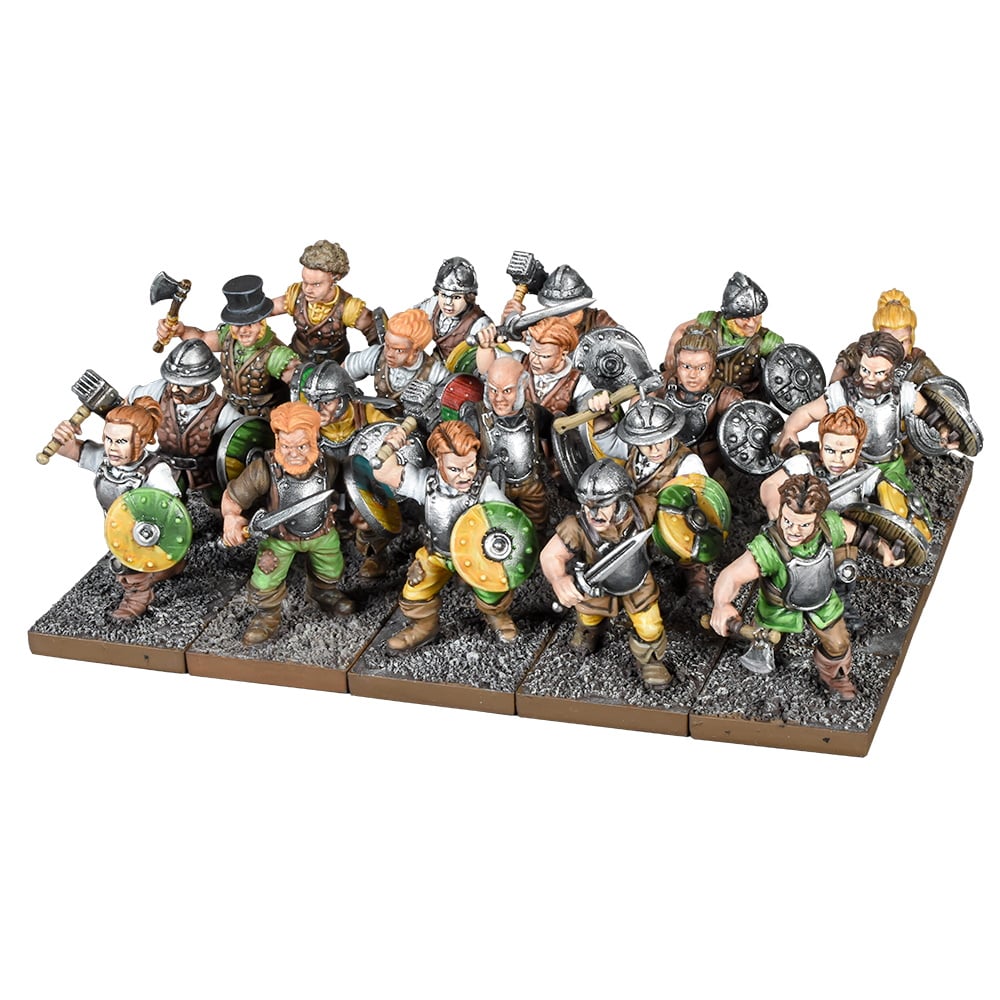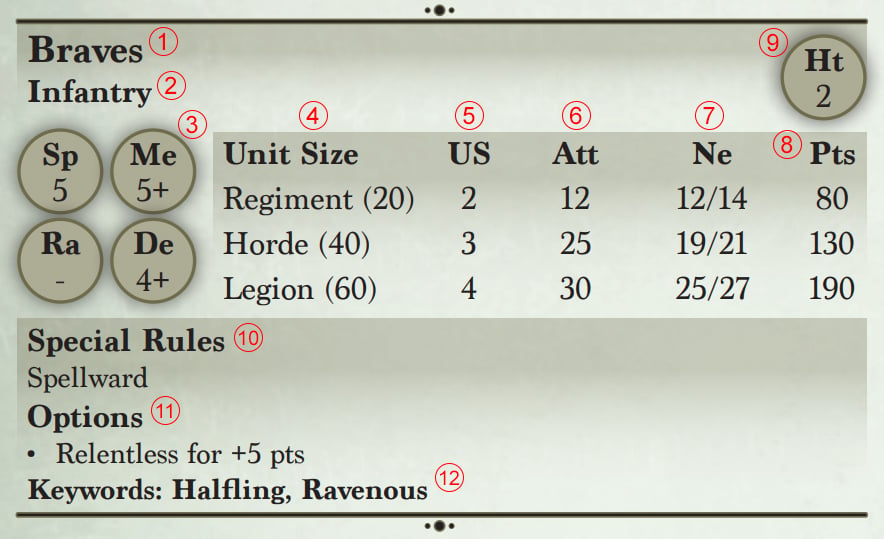Today’s blog begins a journey on how to play Kings of War.
This series of blogs are designed for new players who are just starting on their journey in playing Kings of War and how the game works. In order to understand how to do just about anything in the game, you have to know what a unit is! So first and foremost, we need to break down the Unit Profile and what everything means.
The Unit Profile
In Kings of War, a unit is made up of a number of models arranged together on a rectangular base. Each unit will have a corresponding profile which defines your model’s role in the battle. Every unit comes with a different Unit Profile containing stats, unit type, special rules, and keywords that make it unique. We recommend finding the models that you like within your army as the best place to start when looking at an army. Understanding how the models perform is a critical element of your enjoyment, but models that spark your imagination are the quickest way to fall in love with a faction.

Let’s take a look at a unit and its profile so we have a better understanding of what the stats mean.

ONE
This is the Unit Name. It matches the corresponding models to the unit and identifies it.
TWO
Unit Type. This tells you what footprint each of the Unit Sizes (4) go on, and what size base to use. These can be other types such as Large Infantry and Cavalry and so on.
THREE
The Core Stats for the unit.
Sp – Speed. How many inches the unit can move up to when it carries out an Advance order.
Me – Melee. The number on a D6 required to achieve a successful hit in the Melee Phase.
Ra – Ranged Attack. The number on a D6 required to achieve a successful hit in the Ranged Phase. Note: A ‘-‘ in this place means the unit does not have a ranged attack.
De – Defence. The number on a D6 your opponent is required to achieve in order to successfully damage this unit.
FOUR
Unit Size defines the footprint the Unit Type (2) must occupy. The number shown in brackets is the full model count required to fill the base. Thanks to multibasing (more below), this isn’t a hard number and players can use fewer models than listed here!
FIVE
US – Unit Strength. This number represents the presence or control of the battlefield the unit has. It is used when scoring is calculated for determining the winner in many scenarios.
SIX
Att – Attacks. The number of dice rolled against your Me stat when attacking in the Melee Phase.
SEVEN
Ne – Nerve. A unique number combination of damage and morale. The first number represents when a unit is close to loosing its composure. The second number represents when the unit is Routed! and removed from play.
EIGHT
Pts – Points. The number used to represent how valuable a unit is. When building a list, adding your total points spent for all units selected must fit within the agreed points limit. Also used for some scenario play to determine the winner.
NINE
Ht – Height. A number used to represent how tall a unit is on the battlefield. This number allows quick reference of intervening units and terrain and how easily it can draw line of sight to the enemy.
TEN
Lists out the Special Rules that make this unit unique and modify its gameplay.
ELEVEN
What available upgrades or swaps the unit can make to further customize it, for the appropriate points.
TWELVE
Keywords are not rules themselves, but indicators to how a unit can interact with other units. Oftentimes heroes will confer special bonuses like the Halfling Sauceror using its Gastromancy ability on Ravenous units.
This information is consistent among all units in Kings of War. The various combinations of these stats provide variety and exemplifies the flavour of your army. Players enjoy pouring over the details of the units available to them to find the perfect combination of synergy and fun. Units in Kings of War are designed to compliment each other with how they perform. So have fun unlocking all the potential combinations of battlefield strategy by checking out all the units available in your army!
Multibasing
Arguably one of the biggest challenges to rank and flank wargames is the number of models needed for a huge army. Kings of War’s ruleset provides a solution for this thanks to the Nerve mechanic. Damage is recorded on your unit, but the unit itself doesn’t degrade. That means there’s no need to remove models and the unit’s stats never change. Because of this, the Unit Type (2) and Unit Size (4) determine the base size, and that’s all that matters!
In our example profile, a Regiment (20) means that 20 models, ranked 5 models across (100mm) by 4 models deep (80mm) creates a base size of 100X80 for the regiment. With the Nerve mechanic, it’s perfectly acceptable to put 15 models on the base and pose them dynamically as a diorama, showing loads of character and making your unit really pop. This is what we call multibasing.

An example of two multibased Riftforged Orc Troops
Hobbyists rejoice! By incorporating terrain elements and even other models, you can make inspired units that come to life.
Kings of War players have truly made their creativity shine thanks to this and we love that it’s a part of the game!
Check back tomorrow when we take a look at list building!
